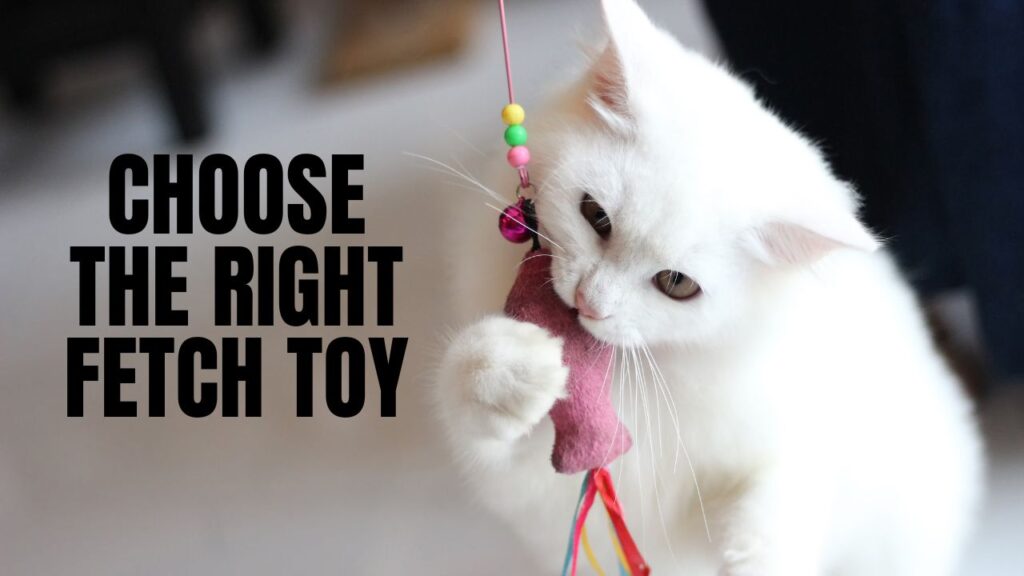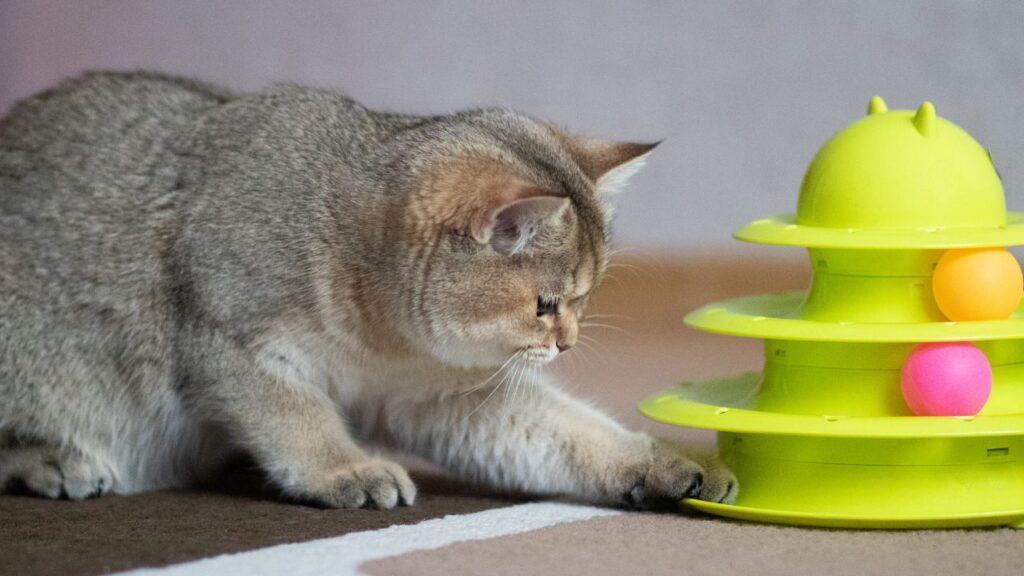If you’ve ever seen a dog fetch a ball and thought, “Hey, I bet my cat could do that too,” you’re in for a delightful surprise! While cats may not be known for fetching like their canine counterparts, it’s absolutely possible to train a cat to play fetch. And trust me, it’s as fun and rewarding as it sounds. Imagine your cat bounding over to grab a toy and bringing it back to you. It’s a fun way to bond, provide mental stimulation, and get your cat moving!
In this article, we’ll dive into how to train a cat to fetch, including all the tips, tricks, and patience you’ll need. Whether you’re trying to teach your cat a new party trick or you just want to engage in a unique play session, we’ve got you covered.
Contents
Why Train a Cat to Fetch?
Before we jump into the training process, let’s first explore why training your cat to fetch can be so beneficial:
1. Mental and Physical Stimulation
Just like humans, cats need mental and physical exercise to stay healthy. Fetch is an amazing way to keep your cat physically active while also challenging them mentally. The task of chasing, retrieving, and returning a toy uses up that pent-up energy, especially if your cat is mostly indoors.
2. Stronger Bonding
Training your cat to fetch creates a shared experience between the two of you. Not only is it fun, but it strengthens your bond. As you work together, your cat will begin to associate you with positive experiences, which can help deepen your relationship.
3. Satisfying Their Natural Instincts
Believe it or not, fetching aligns with some of your cat’s natural hunting instincts. Cats are born hunters, and the act of chasing and pouncing on toys mimics their prey-catching behaviors. Fetch is a great way to engage these instincts in a way that’s safe and fun.
Getting Started: Preparing for Fetch
Now that we know why fetch is a great activity, let’s dive into the “how.” But before you start tossing toys across the room, there are a few things you’ll need to do to ensure success.

1. Choose the Right Toy
Cats are picky creatures, so choosing the right toy is critical to getting them interested. When selecting a fetch toy, keep in mind that:
- Small toys are better suited for cats. You want something they can easily carry in their mouth, like a small ball or a lightweight stuffed animal.
- Interactive toys (think feather wands or small balls with bells) can help spark interest before you even start training.
- Something that moves: Cats are naturally drawn to moving objects. If you can make the toy roll or bounce, it’ll catch your cat’s attention much faster.
2. Pick the Right Time and Place
Training is most successful when it’s done in a quiet, distraction-free environment. Pick a time when your cat is calm but alert. Ideally, this will be before their nap time or after they’ve had a bit of play. You don’t want your cat to be too hyper or too sleepy to focus!
Make sure you’re in a safe space with plenty of room for your cat to chase and return the toy. A hallway or a living room works well, but make sure the area is free of breakables!
Step-by-Step Guide: How to Train a Cat to Fetch
Training your cat to fetch requires patience, consistency, and a little creativity. Here’s a step-by-step breakdown of how to get started:
Step 1: Get Your Cat Interested in the Toy
The first step to fetch is simply getting your cat to engage with the toy. If your cat isn’t interested in the toy, fetch training will be impossible. Here’s how you can do it:
- Start with Playtime: Wave the toy around in front of your cat to get their attention. Use quick, jerky motions to mimic the movement of prey. This will make the toy more enticing.
- Encourage Hunting Instincts: Cats love to chase things. Roll or bounce the toy on the ground, so it moves in an unpredictable way. The goal is to activate your cat’s natural hunting instincts, making them want to chase the toy.
- Create Positive Associations: Once your cat shows interest in the toy, offer a treat or affectionate praise. This is important to create a positive association between the toy and a reward.
Step 2: Introduce the “Fetch” Command
Once your cat is playing with the toy and seems interested, it’s time to add the fetch aspect. Here’s how to introduce the command:
- Throw the Toy: Gently toss the toy a short distance away. You don’t need to throw it far, especially when starting out.
- Use a Cue Word: As you throw the toy, say a consistent command like “fetch!” or “bring it back!” This verbal cue will help your cat learn what you want them to do.
- Wait for Your Cat to Retrieve: At first, your cat might not understand the concept of returning the toy. Some cats will immediately pick it up and return it to you, but others might wander off with the toy. If they do, wait patiently for them to bring it back.
Step 3: Encourage the Return
Now comes the most important part of fetch: teaching your cat to bring the toy back to you. This is where consistency and patience come into play.
- Use a Treat as Motivation: If your cat picks up the toy but doesn’t bring it back, encourage them by showing them a treat. As soon as they drop the toy or come closer to you, reward them with praise or a small treat.
- Repetition: Every time your cat picks up the toy, offer the treat or praise when they bring it back. It may take a while before they understand that bringing the toy back is part of the game, but with enough repetition, they’ll start to make the connection.
- Use the Toy to Lure: If your cat is reluctant to return the toy, hold the toy out in front of them. Cats are curious and will often come toward you to investigate. This can help coax them into bringing the toy back.
Step 4: Practice, Practice, Practice!
Like all training, practice makes perfect. Spend a few short training sessions each day playing fetch with your cat. The key here is consistency.
- Keep sessions short: Cats have a short attention span, so it’s best to keep training sessions under 10 minutes.
- End on a positive note: Always finish your training session when your cat successfully brings the toy back, even if it’s just once. This leaves your cat with a positive experience and makes them more likely to repeat the behavior in the future.

Troubleshooting: Common Challenges
Even the most patient pet owners will encounter a few bumps along the way. Here are some common challenges and how to overcome them:
1. Cat Isn’t Interested in the Toy
If your cat isn’t interested in the toy, try switching it up! Experiment with different types of toys to find one your cat prefers. Some cats love balls, while others might prefer a crinkly toy or something with feathers.
2. Cat Won’t Bring the Toy Back
This is a tricky one! Remember that not all cats have the instinct to return items. If your cat doesn’t return the toy right away, don’t force it. Try using a treat or a new, more exciting toy to get them to drop it near you. The goal is to encourage the behavior slowly, not to force it.
3. Short Training Sessions
Training should always be fun for your cat, so if they’re losing interest or getting frustrated, take a break. Too much training can backfire. Short sessions spaced throughout the day work best.
Conclusion
Training your cat to fetch may not be as impossible as it seems! With patience, consistency, and the right approach, you can turn your cat into a fetch-playing pro. And, let’s be honest, there’s something absolutely magical about watching your cat chase down a toy and bring it back to you. It’s a fantastic way to bond, keep your cat active, and add a bit of fun to your day.
Remember: Every cat is unique, and some might take more time than others to learn the ropes of fetch. But don’t give up! Keep it fun, keep it positive, and you’ll soon have your very own fetching feline companion.
Happy training, and may the fetches begin!

